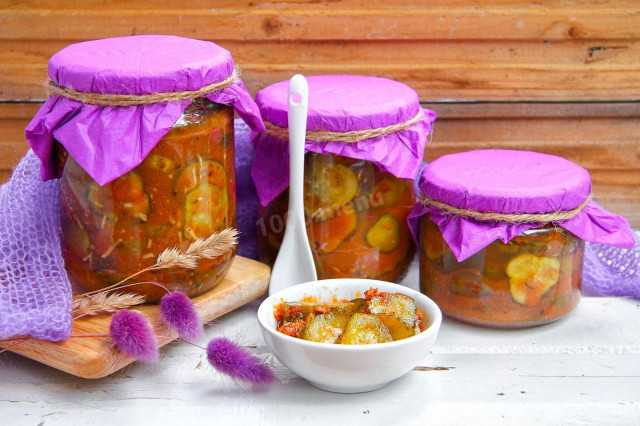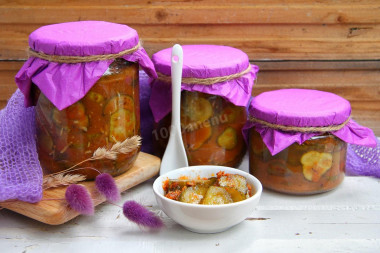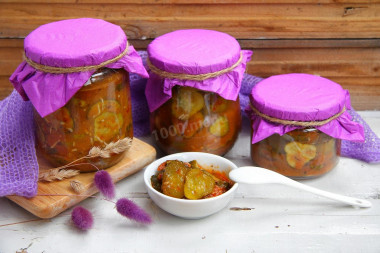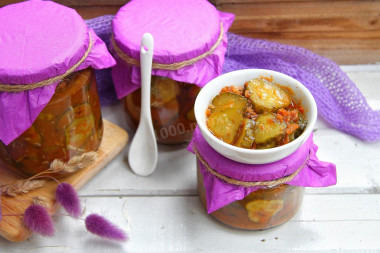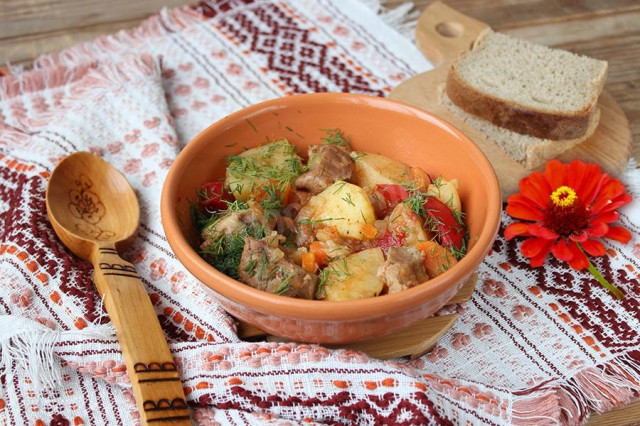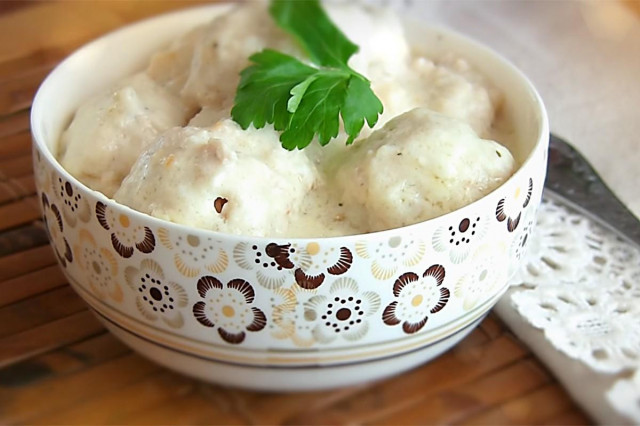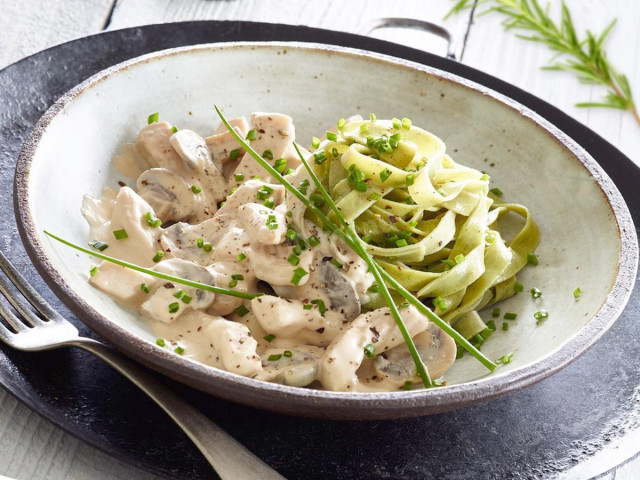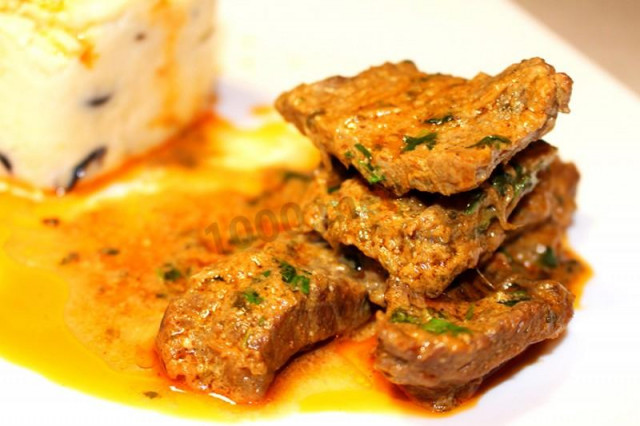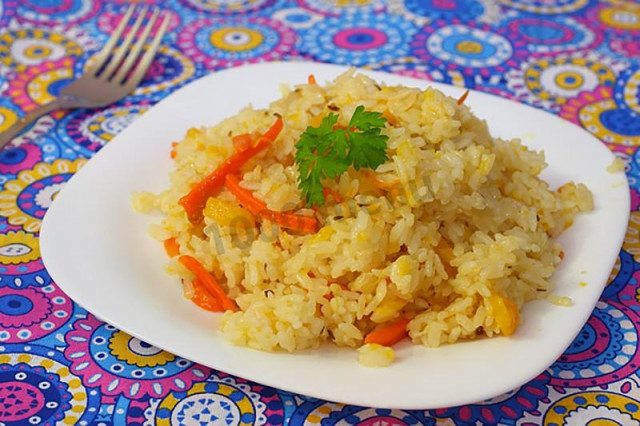Composition / ingredients
Step-by-step cooking
Step 1:
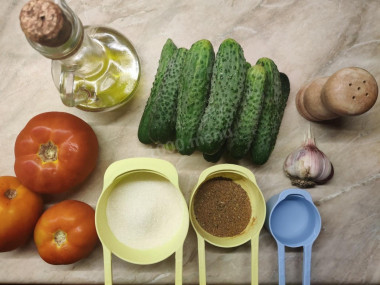
How to make cucumbers in Georgian? Prepare all the necessary ingredients. Take cucumbers of the salted variety (dense and prickly). I have an assortment of red and orange tomatoes, but it absolutely does not matter! Wash the vegetables under running water. Dry adjika can be found both on store shelves and by weight in the market. If you have acetic essence, dilute it in advance to 9% vinegar according to the instructions on the bottle.
Step 2:
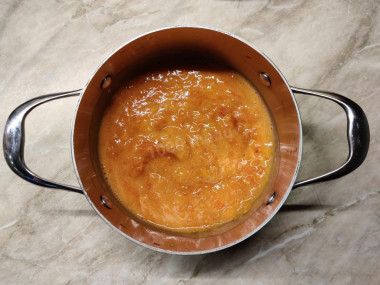
Chop tomatoes into puree in any convenient way: through a meat grinder or blender. Pour the mixture into a saucepan with a thick bottom.
Step 3:
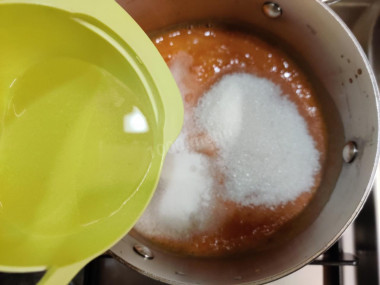
Put the puree on low heat and, stirring, bring to a boil. As soon as the mixture boils, add salt, sugar and sunflower oil. Cook the puree for another 15 minutes .
Step 4:
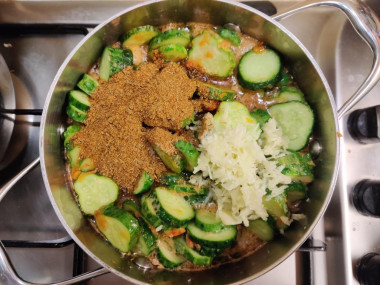
During this time, cut the cucumbers into 5-7 mm high circles. and send them to the pot. Add nine percent vinegar. At this stage, it may seem that there are too many cucumbers, but that's how it should be! Cucumbers will still give their liquid.
Step 5:
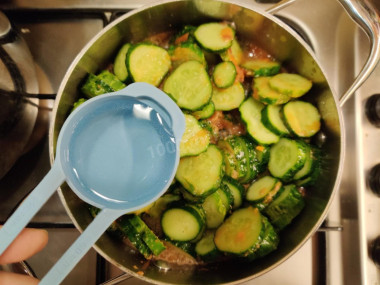
Add dry adjika and finely grated garlic. It is assumed that the snack should be spicy, but the amount of spices is possible and necessary! adjust to your taste, soberly assessing the capabilities of your body :)
Step 6:
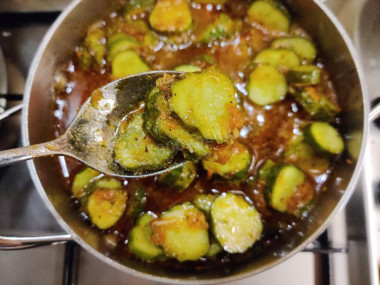
Cook cucumbers for another 10-15 minutes until they change color. If you cook longer, cucumbers will not crunch.
Step 7:
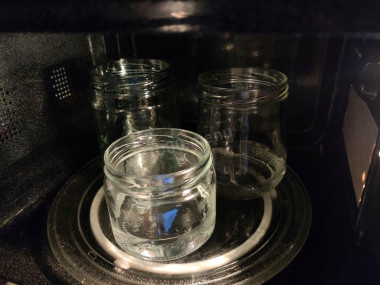
During this time, you need to have time to wash and sterilize the cans. I usually do this. I pour a centimeter of ordinary tap water into each and warm it in the microwave for 3 minutes at a power of 800 watts. The water should boil. Just pour boiling water over the lids.
Step 8:
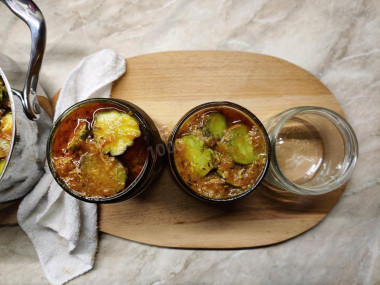
Distribute the snack into the jars, filling them up to the neck. The less space left in the bank, the better.
Step 9:
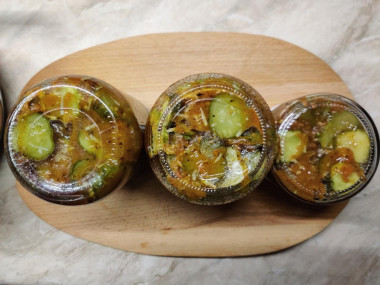
Seal the jars with lids, turn the bottom upside down, cover with a warm blanket and leave at room temperature until completely cooled. After that, you can remove the workpiece for storage in the pantry.
A pleasant snack in every way! With the specified amount of garlic and adjika, it turns out to be sharp, but not too much. In any case, much will depend on the initial acuity of the adjika itself.
Bon appetit!
Remember that spices such as salt, sugar, as well as vinegar and its substitutes are used in recipes for winter preparations not only for taste, but primarily as preservatives. Therefore, in no case should you reduce the concentration of salt and sugar, and also replace vinegar (essence) with weaker concentrations than indicated in the recipe, otherwise vinegar (salt / sugar) will not show their preservative properties and the workpiece will be spoiled.
If you are new to canning, have little experience in home preparations, it is better to hedge and
sterilize cans of vegetables, even if the recipe says the opposite
. This guarantees you that the banks will not swell during storage if you did something wrong, did not report something/shifted or violated the technology.
Remember that banks swell more often for the only reason:
excess gases are formed in them
. And those, in turn, appear because
they are isolated by microorganisms trapped in the workpiece
.
Anyway,
the swelling of the cans has nothing to do with the quality of the recipe, which has already been successfully prepared.
Caloric content of the products possible in the composition of the dish
- Tomatoes - 23 kcal/100g
- Fresh cucumbers - 15 kcal/100g
- Garlic - 143 kcal/100g
- Granulated sugar - 398 kcal/100g
- Sugar - 398 kcal/100g
- Wine vinegar (3%) - 9 kcal/100g
- Vinegar 9% - 11 kcal/100g
- Balsamic vinegar - 88 kcal/100g
- Apple vinegar - 14 kcal/100g
- Vinegar - 11 kcal/100g
- Adjika - 59 kcal/100g
- Salt - 0 kcal/100g
- Sunflower oil - 898 kcal/100g
- Refined sunflower oil - 899 kcal/100g

